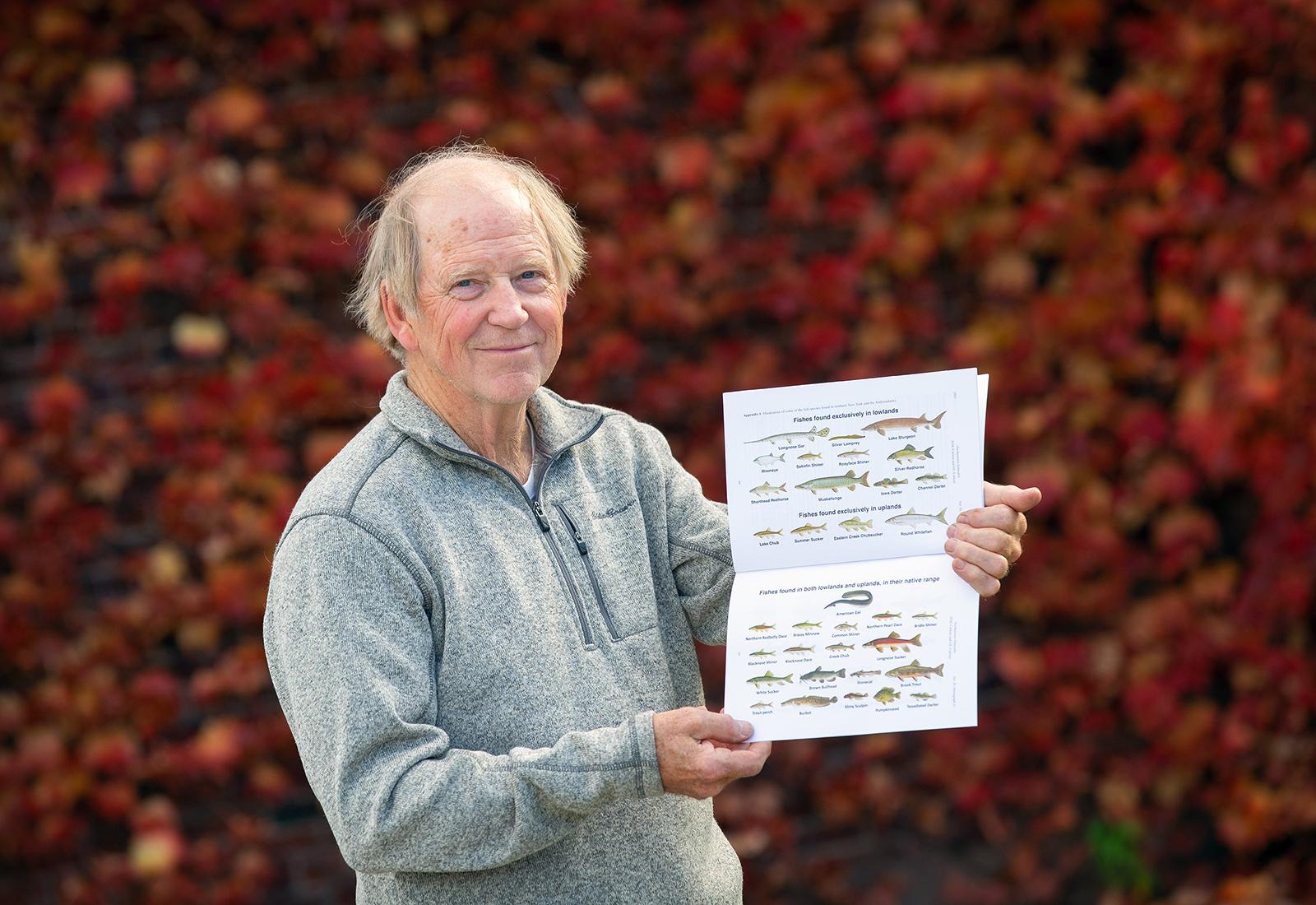Douglas M. Carlson, Biology Research Associate at SUNY Potsdam, Releases Complete Guide to Fish Species of Northern New York & The Adirondacks

SUNY Potsdam Biology Research Associate Douglas M. Carlson has released “Fishes of North New York and the Adirondacks,” published by Northeastern Naturalist.
Douglas M. Carlson, a biology research associate at SUNY Potsdam, has just released a monograph published by Northeastern Naturalist, titled “Fishes of Northern New York and the Adirondacks.” The 50-page illustrated booklet is a complete guide to the fish species in the region, based on Carlson’s years of research, as a retired fisheries biologist with the New York State Department of Environmental Conservation.
The report draws from fish surveys from the 1930s to the present, summarizing and interpreting the distribution of fishes in the region surrounding and including the Adirondacks, with particular attention to upland versus lowland ecoregions. In total, 114 fish species and two hybrids are documented in Northern New York, of which 80 percent are native to New York State. The book outlines challenges posed by non-native species, which have caused changes in fish communities and resulted in declines in native species.
“I hope that people can answer the question, ‘What’s special about Northern New York and the Adirondacks?’ I think they would find that in the Adirondacks, there are several special things about the fish, described in the book. It’s just higher elevation, with a simpler fish community, though. The lowlands, which I really wanted to draw attention to, has even more rich diversity. The rivers are largely intact and there’s not many changes, as with a lot of rivers of New York,” Carlson said. “St. Lawrence County has such a stronghold of this species richness, and specialized habitats that are still admirably intact. I like to say that the St. Lawrence County streams are really the best ones still in New York State, with unusual fish that are special to that area.”
Carlson resides in Copenhagen, N.Y., and travels to SUNY Potsdam to conduct research alongside faculty and students at SUNY Potsdam’s Department of Biology. The publication follows on his broader work, “Atlas of Inland Fishes of New York,” which he wrote in 2016 while working for the DEC. He authored the new monograph with his daughter, Dr. Jane E. Carlson, an ecologist with the National Park Service.
Carlson is currently collaborating with Dr. Glenn Johnson on a project to examine the distribution, spawning and habitat relationships of Mooneye, a threatened fish species in New York State, in the Oswegatchie River. The project is funded by the U.S. Fish and Wildlife Service.
“Fishes of Northern New York and the Adirondacks” is available for purchase as a digital download here. Northeastern Naturalist, a title of the Eagle Hill Institute, publishes natural history research related to all aspects of the biology and ecology of the organisms and environments of Northeastern North America. For more information on the publication, contact Carlson at carlsodm@potsdam.edu.
SUNY Potsdam’s Department of Biology is grounded in the principle that every student should receive a quality education fitting their interests. Undergraduate research is embraced, with opportunities for hands-on learning in the fields of ecology, evolutionary biology, cell and molecular biology, environmental science, and anatomy and physiology. The department also operates the Wagner Institute for Sustainability and Ecological Research. For more information, visit www.potsdam.edu/academics/AAS/biology.
About SUNY Potsdam:
Founded in 1816, The State University of New York at Potsdam is one of America’s first 50 colleges—and the oldest institution within SUNY. Now in its third century, SUNY Potsdam is distinguished by a legacy of pioneering programs and educational excellence. The College currently enrolls approximately 3,000 undergraduate and graduate students. Home to the world-renowned Crane School of Music, SUNY Potsdam is known for its challenging liberal arts and sciences core, distinction in teacher training and culture of creativity. To learn more, visit www.potsdam.edu.
